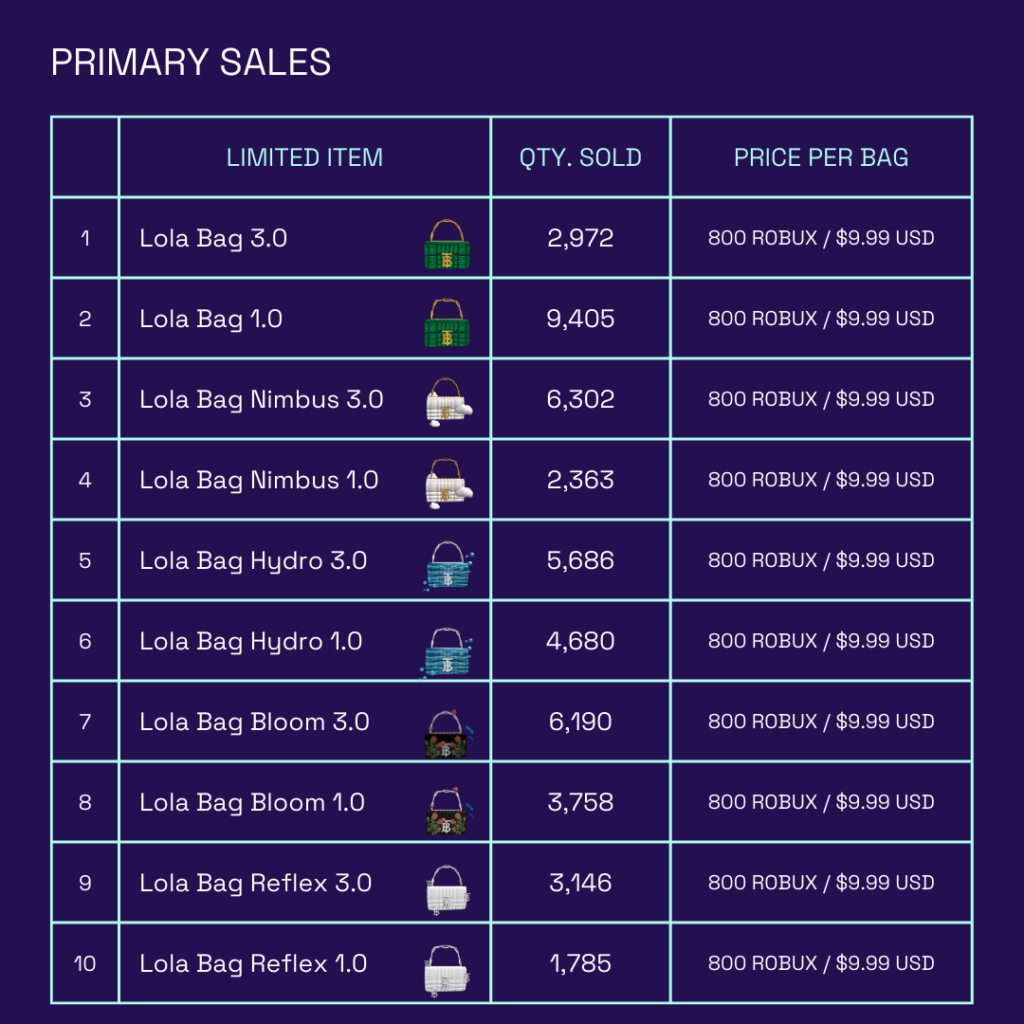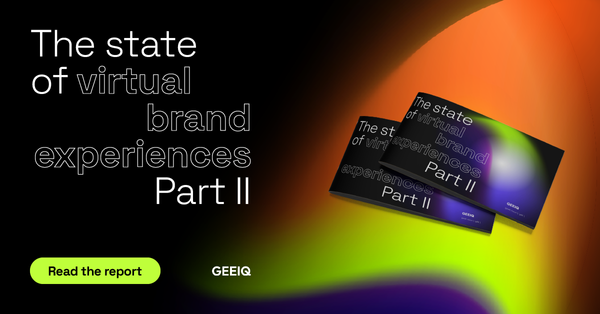With 50 million daily users, Roblox activations are a no-brainer for brands looking to engage and monetize previously untapped virtual communities. But how do these brands measure their success, and are they authentically enriching these experiences, or just jumping on a virtual bandwagon?
Burberry’s latest foray into digital fashion is just one example of how household brands looking to stay ahead of the virtual curve are carving out long-term metaverse strategies. July’s drop of five, nature-inspired, digital variations of the iconic Burberry Lola Bag allowed Roblox users to fashion their accessory across millions of virtual experiences.
But with all the buzz around fashion’s embrace of these environments, is this a sustainable new revenue stream for brands? And even if this virtual outing was deemed a win for Burberry itself, was it successful in adding value to the community it sought to engage? We took a look at the data to find out.
A successful activation?
Listed at 800 Robux per bag, or $9.99 USD, Roblox users were able to buy each item for a limited 24 hours at a markedly lower price than they might find tagged to a real-life version on Regent Street or Madison Avenue (which retail starting at $1,200).

So what was the value of this virtual escapade for Burberry? Based on Roblox numbers, GEEIQ’s analysis shows that while Burberry’s latest virtual drop generated nearly $130,000, the brand took home 30% of this, based on Roblox’s DevEx revenue split model (Diagram 1). When considering Burberry’s 2021 market valuation of $5.2 billion, this is small change for the British fashion house. But that doesn’t mean that this activation was a failure.

Did this drop generate revenue for Burberry? Yes. Did it generate a buzz around the fashion house and its wider metaverse activities? Absolutely. What’s more, compared to Burberry’s real-world production costs, this collection (created with Builder Boy, a prolific digital fashion designer in Roblox) would have cost considerably less to create. But while one of these bags might have set you back a modest 800 Robux, the secondary market is where things get interesting…
When a virtual Gucci bag resold for 350,000 Robux, or around $4,115 in 2021, the fashion industry took note. How could a digital asset that isn’t an NFT and exists only within Roblox sell for nearly $1,000 more than its real-life counterpart? All eyes were now on this space. Fast forward a year to Burberry’s Lola Bag drop and the data tells a different story. With Roblox taking a 30% cut on secondary market sales, just one of the ten limited items are generating a profit for the community at resale, as of 05/08/2022 (Diagram 3).
So while Burberry enjoys the fruits of its primary sales, along with some great coverage, can the same be said for the wider Roblox community?
Activating authentically
At GEEIQ, we’re of the thinking that for a brand to truly become native to new, virtual environments, the primary focus must be on enriching the experience of the communities it’s looking to engage. The data suggests that metaverse activations focused on limited items don’t always deliver value for the community itself. In this instance, value actually decreased on the secondary market for users likely banking on making a Robux profit.
Rachel Weller, Burberry’s Global Vice President of Channel Innovation, states that when Burberry enters these virtual environments, “we always try to partner with creators who are native to these spaces, because they’re very plugged in with the platforms.” And there’s no doubt that this drop was a significant step in Burberry’s strategy to engage with new, virtual communities.
A novel move to add value to users was done through the pairing of each bag with an exclusive ‘emote’, a unique action that avatars can perform – and the first of its kind, according to Roblox. But short of creating an immersive Roblox experience for players, in the image of Spotify’s Spotify Island, Nike’s NIKELAND, Tommy Hilfiger’s recent Tommy Play, or Gucci’s Gucci Town, Burberry delivered a non-gamified limited item drop, which may account for some of the results represented in the data.
Regardless, Burberry’s commitment to a long-term virtual strategy is pretty evident, with their first online game B Bounce launching in 2019, followed by NFT drops with Blankos Block Party in both 2021 and 2022. But what lessons can be learned from their latest activation?
The data suggests that drops of limited items in virtual environments place emphasis on monetary value for the brand, rather than the community itself, which in turn risks alienating the very people they’re seeking to engage. That’s why it’s so important that brands activating within the metaverse are led by data, with strategies focused on becoming native to the virtual environment they’re entering.
This release can be deemed a success in many verticals, it opened up a new revenue stream with minimal overhead costs, and has helped to further position Burberry as a fashion house at the forefront of innovation in the metaverse. It will be interesting to see how limited items evolve in this space, and whether they continue to deliver value for the community or not. Whatever the case, the fashion industry would be wrong to ignore Burberry’s whole-hearted, virtual embrace of all things metaverse.
